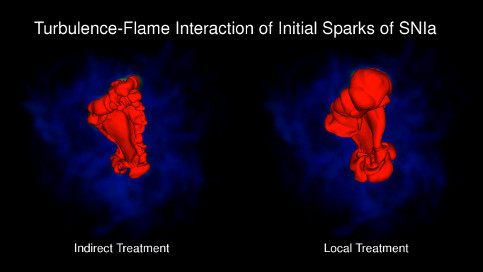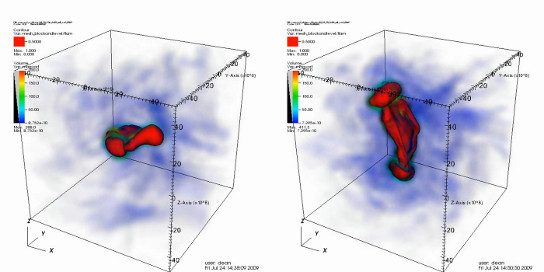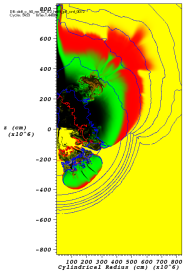
(10MB Movie)
Simulation of the early burning phases of a Type Ia supernova comparing the evolution of the propagating reaction front using two different ways of accounting for interaction between the turbulence and the front. The colored shading (predominantly blue at low speeds) shows the turbulent velocity field. The red surface shows the location of the thin reaction front where carbon and oxygen is fused to iron-group material. The simulation begins with the newly-ignited propagating reaction front. An increase in the turbulence near the front can be seen in some places.
The simulation on the left does not directly model the effects of turbulence to wrinkle and accelerate the flame. This may cause the propagation rate to be understimated due to the finite cell size of the simulation. The simulation on the right uses a model to enhance the propagation of the reaction surface due the microscale wrinkling expected from measuring the local turbulence field near the reaction front. This leads to slightly faster propagation and makes the surface look smoother, as it is more representative of the average position of the front that is wrinkled on scales too small capture.



